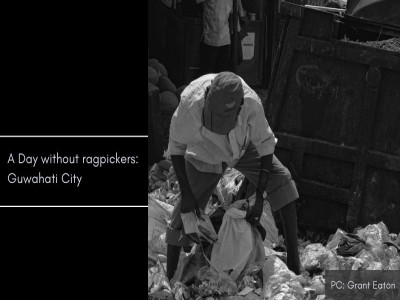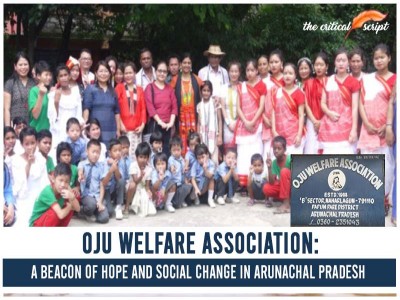
Lesser-known tribes of Arunachal Pradesh
Nestled in the Eastern Himalayan ranges of India, Arunachal Pradesh is a state with diversity in terms of ethnically and natural resources. It is often asserted that the state boasts the indigenous tribal community amassing up to 26 major tribes and more than 100 sub-tribes. But how much do we know about our major tribes? And do we actually have 100 sub-tribes that we know or may not know of?
In this article, I will attempt to introduce a few of the lesser known-almost non recognized tribes by many. Here's a brief overview, for detailed information, I will add the extensive study paper inscribed by the researchers that interested people can read.
The Buguns -
Also known as the 'Khowa' tribe is a minor tribe residing in western Arunachal Pradesh which amasses a population of roughly 2,000-3,000 people. The majority of the people live in the subtropical Tenga valley or Singchung, but a few also live in the subtropical forests around Bhalukpong in the West Kameng district.
The dialect in which they communicate is known as Kho-Bwa which is derived from the terms "Kho" (fire) and "Bwa" (water). Hence, the name of the tribe Khowa is also related to the meaning. Their dialect is relatively similar to that of their neighbour Sherdukpen tribe, with whom they share the territory.
Pham Kho Sowai festival and Diying-Kho (ChhatSowai ) are the prestigious festivals celebrated by the Buguns. Pham Kho Sowai is a harvest festival celebrated for the good crop production, peace, and harmony of all Bugun tribes, it is observed on the 10th of September every year. ChhatSowai is celebrated for the health and well-being of Buguns residing specifically in the area of Singchung Valley.
The religion and culture of the Buguns have been largely influenced by the Sherdukpen community. They used to believe in the local Donyi-polo religion until they came to be familiar with the Tibetan belief. They were first introduced to Tibetan religious traditions by the Sherdukpens, who followed Gelugpa Buddhism. Many Buguns identify themselves to be Buddhists however, a majority of them continue to follow Donyi-Poloism.
For better awareness of the Mythology and Migration of The Bugun (Khowa), watch the speech by Shri Sang Norbu Sarai during the Pham Kho Sowai festiva https://youtu.be/uK35hszQ13Y
The Puroik-
Erstwhile, also known as the 'Sulung', meaning slave in 'Bangni' (now Nyishi) dialect. The Puroiks is a small community with roughly 7,000 inhabitants, with the majority of the population residing in Sangchu village, Sawa Circle, East Kameng district. Their villages are mainly located along the Par River. Hence, they share close cultural similarities with the neighbouring gun tribe across the river.
The majority of the Puroiks are followers of animism with their principal religion being Donyi-Polo (Sun-Moon) just like the majority of the indigenous people of Arunachal Pradesh. Only a handful of the people have been known to be Christianised.
The major festival of the Puroik tribe is GumkumGumpa, which is celebrated on the 15th of April every year for the peace and prosperity of the community.
The Puroik tribe (then known as Sulung) used to offer bonded labour to the Nyishi tribe (then known as Bangni), who was the dominating tribe at the time. Hence, the name Sulung, meaning slave, was dubbed to them by the Bangnis. These days, both Sulung and Bangnis are derogatory terms that, if used, will be an insult to them.
The Nyishi and Miji tribes have owned the members of the Puroik group as a slave in Arunachal's East Kameng region for years. After nearly 2000-3000 Puroiks were found to be bonded labourers, the district government issued an order prohibiting the feudal practice in March 1999. In terms of social, political, and economic conditions, the Puroik tribe is one of the most backward and volatile tribes in the state and is prone to being a slave still today.
For a detailed study, read Understanding Tribal Life and Livelihood in Changing Times: A Study on the Puroiks of Arunachal Pradesh by Tame Ramjuk, Research Scholar, Arunachal Institute of Tribal Studies (AITS) Rajiv Gandhi University
The Bangrus
The Bangrus is one of the minor tribes of Arunachal Pradesh with a population of about 1,023 (39.35%) out of approximately 2,600 people in the Sarli circle. Although uncertain, most speculate them to be a sub-tribe of the larger tribe, the Nyishis. Like various other tribes that don't know their original roots; the Bangrus, their oral history provides little information we know regarding their origins and migration. However, it is believed that the Bangrus moved from Tibet hundreds of years ago and settled around the area, now identified as the Sarli circle in the Kurung Kumey district. Although acknowledged as original, it is speculated that the dialect they speak is related to Indo-Tibetan influence and has a speech impact on the dialects of their neighbouring tribes such as Nyishis and Puroiks.
Like the other animist tribal communities of Arunachal Pradesh, the principal religion of the Bangrus is Donyi-Poloism. Although Christianity did affect the beliefs, only a few have converted to the same. The main festivals celebrated by the Bangrus are exactly similar to that of the Nyishis, Longte-Yullo - the harvest festival.
Read the extensive research paper for a better understanding of the tribe- The Bangru: The lesser known tribe of Arunachal Pradesh by Tame Ramya
The Yobin
With approximately 5,000 population, the Yobins, also known as the Lisus are another minority tribe of Arunachal Pradesh residing in the villages of Vijaynagar circle as well as Miao town and Injan village of Kharsang circle in Changlang district. The majority of the tribesmen inhabit Gandhigram (their largest village). They are believed to have originated from Eastern Tibet, hence, their dialect is of the Tibeto-Burman language group. The majority of the Yobins follow Christianity and celebrate festivals of Christians such as Good Friday, Christmas, etc. They are known for their finest art and quality craftsmanship. They are also known for being a hardworking tribe.
Like many untapped tribes, there is very little known researched information about this community. But according to available sources, the Vijaynagar (then Dawodi) area inhabited by the Yobin was brought into Indian control after the military operation OP Srijitga, led by Major Sumer Singh of the 7th Assam Rifles, landed in Yobin tribe territory in May 1961 and hoisted the tricolour. They then displaced the-then Lisu tribes to set up a military base. Please see page 28 of the Northeast Trilogy-III, which describes this mission and states the presence of the Yobin tribe in that area.
Yobins were delisted as a scheduled tribe but after a long battle, they finally regained the official APST title in the year 2018.
Read Yobin: A sidelined tribe, Lisu Yobin in India
The Meyor - is another one of the minor tribes of Arunachal Pradesh that constitute a small community residing in the Kibithoo and Walong circles of the Anjaw district. Although the majority of the Meyors are animists like most indigenous tribes, they also follow Mahayana Buddhism. The Meyors live in a region with a few Gompas, including the first Gompa built in the year 1960 at Kaho village of Anjaw district sharing the mountain in harmony with the Mishmis. The main festival celebrated by the Meyors amongst the many is the Lhachutt festival. Other festivals include Sungkhu, Tso Tangpo and Tsotangpho Wangley.
Please refer:
I might not have been able to cover all the minor tribes of Arunachal, but it’s my first effort and we can all begin with knowing them as a start.
Disclaimer: The opinions expressed in this article are those of the author's. They do not purport to reflect the opinions or views of The Critical Script or its editor.

Newsletter!!!
Subscribe to our weekly Newsletter and stay tuned.

















Related Comments